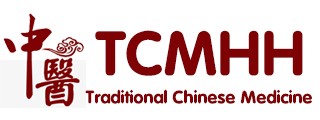NAME
FEISHU
LOCATION
1.5 cun lateral to DU-12 Shenzhu, at the lower border of the spinous process of the third thoracic vertebra.
NEEDLING
Puncture obliquely 0.5 to 0.7 cun.
Moxibustion is applicable
Oblique insertion towards the spine, 0.5 to 1 cun or
Transverse insertion 1 to 1.5 cun
Caution: perpendicular needling or oblique needling away from the spine carries a substantial risk of pneumothorax
Straight insertion, slanted slightly toward the spine, 1 to 1.5 cun
Sensation: local soreness and distention, sometimes extending between the ribs
Caution: Do not needle to deeply in order to avoid puncturing the Lung
Transverse insertion, pointed downward along the muscle1 to 2 cun
Sensation: local distention and soreness
Locate at the highest visible point of the paraspinal muscles
COMMAND FUNCTIONS
Back Shu Point of the Lungs
ACTIONS
Regulates and tonifies the Lungs (especially Qi)
Tonifies Lung Qi
Nourishes Lung Yin
Regulates the Upper Jiao
Tonifies ancestral Qi
Disperses Lung Qi
Stimulates the Lungs' descending function
Expands and relaxes the chest
Dispels Wind, Wind-Cold, Wind-Heat and Wind-Dryness
Transforms Phlegm, Phlegm-cold, Phlegm-Dampness and Phlegm-Heat
Clears Heat
Releases Exterior conditions
Stimulates sweating
Regulates the Nutritive (Ying) and Defensive (Wei) Qi
Stops cough
INDICATIONS
Cough
Asthma
Chest pain
Hemoptysis
Afternoon fever
Night sweating
Pulmonary tuberculosis
Pleurisy
Bronchitis
Urticaria
Lower back pain and stiffness
Throat Bi
Dyspnea
Shortness of breath with no desire to speak
Sticky, yellow sputum
Wheezing cough
Persistent cough in children
Heat sensation in the chest
Coughing of Phlegm
Rapid pulse
Chills and fever
Cold shivering
Lung atrophy
Deficiency taxation fever
Pain of the upper back and shoulder
Deficiency agitation
Heat in the body
Epilepsy
Vomiting
Vomiting fluid after eating
Vomiting of foam
Crooked spine
Turtle back in children
Upper Jiao wasting and thirsting syndrome
Steaming bone disorder
Consumption with steaming bone disorder
Atrophy syndrome due to Lung Heat
Insanity
Convulsions
Lung abscess
Tidal fever
Spontaneous sweating
Insomnia
Neck and back stiffness
Chest fullness with difficult breathing
Vomiting
Pneumonia
High fever with cough
Chronic Lung Qi Deficiency
Goiter
Cold Lungs
Difficult breathing on lying down
Attack of the Lungs by Wind
Fever
Aversion to Cold
Anhydrosis
Consumption
Dryness of the mouth and tongue
Mania
Mad walking with a desire to commit *******
Fullness with no pleasure in eating
Jaundice
Pain of the flesh
Itching of the skin
Urticaria
COMBINATIONS
| UB-12 Shenzhu | UB-43 Gaohuangshu | DU-14 Dazhui UB-43 Gaohuangshu |
| Chronic Lung Qi Deficiency | Nourishes Lung Yin | Chronic bronchitis (moxibustion) |
| N-BW-20 Feirexue REN-17 Shanzhong LU-1 Zhongfu PC-6 Neiguan | DU-14 Joined to N-BW-6 Dazhui Joined to Jiehexue REN-17 Joined to REN-18 Shanzhong Joined to Yutang LU-5 Chize ST-36 Zusanli or DU-14 Joined to N-BW-6 Dazhui Joined to Jiehexue REN-20 Joined to REN-21 Huagai Joined to Xuanji LU-5 Chize ST-36 Zusanli | LU-2 Yumen LU-1 Zhongfu SP-1 Yinbai LIV-14 Qimen UB-47 Hunmen PC-7 Daling |
| Bronchial asthma | Pulmonary tuberculosis | Chest pain |
| REN-14 Juque | ST-40 Fenglong | REN-22 Tiantu |
| Fullness in the chest | Cough with Phlegm | Coughing Hoarse voice |
| LU-6 Kongzui PC-3 Quze | DU-13 Taodao | DU-16 Fengfu |
| Hemoptysis | Seasonal fever | Mad walking with a desire to commit ******* |
| DU-2 Yaoshu | ||
| Stiffness of the lumbar region and back with inability to bend laterally |
CONTRAINDICATIONS
NOTES
This is the the pre-eminent point to treat all disorders of the Lungs. This point can be used for both Exterior and Interior conditions. In cases of chronic Lung Qi Deficiency causing asthma or cough that is worse in the winter, apply intensive moxibustion to this point during the summer. The action of this point extends to the Heart.
